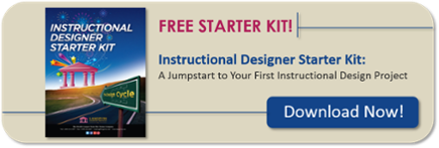Photo by: Pixabay via Canva
As instructional designers, we’ve all experienced having more content to design than time allotted to create it! Management’s guidance is often to “Just do it” (don’t you wish Nike never came up with that tag line?!). So, what to do? People learn by doing what is most relevant to their success in the workplace.
One way to ensure the training is relevant is to incorporate instructional best practices into your course design. It’s essential to identify the most critical content, include plenty of practice, and make sure the learners are performing the tasks correctly. If they can do it correctly in a safe and supportive training environment, they’ll be successful on the job, too!
When you’re given a project with an unrealistic development timeline, here are a few strategies to use with management:
Negotiate
Familiarize yourself with typical industry standards for instructional design time ratios. A design time ratio is the amount of design and development time required for the creation of a unit of seat time (hours to hours, days to days). These are some commonly used ratios:
- Instructor-led training (ILT) is 45:1
- Web-based training (WBT) ranges from 75-500:1
- Virtual Classroom (VC) ranges from 25-80:1
If you’ve tracked design time ratios within your organization, so much the better! If a new project departs from your historical numbers, you have the beginnings of a concrete discussion with management about realistic timelines.
Provide data comparing the results of a time-constrained course design with a successful course which allocated adequate design time.
Show your stakeholder(s) they’re investing in a training product that is focused on improved job performance. Do they want it done quickly or done well?
Prioritize
Interview your subject-matter expert (SME) team to develop a consensus on which tasks are done most often, are the most difficult to learn, and are most important for successful job performance.
Compare these factors with what your learners already know about the tasks. The result of this process should be a prioritized task list which will indicate where you should put most of your training resources (e.g. time, money, personnel, training materials).
Create, and share with management, a summary of the subject-matter expert’s input, emphasizing their highest priorities.
Alternate Strategies
During the design and task prioritization phase, think outside the box and consider strategies that might not appear to be ideal training solutions, but may successfully address the content. For example, consider using the appendix or a job aid to address some of the required tasks. Using this strategy allows you to allocate time, and other resources, to higher priority tasks.
Voice of Your Customer
The voice of your customer needs to be heard. The desires and needs of the end-users are important considerations for management. From efficiency and motivational standpoints, emphasizing what your target audience feels is relevant to their success, is a great place to put your resources.
So, keep your learners engaged and your training relevant by incorporating these strategies in your next course design. Like Nike says, “Just Do It!” Let us know how it goes by sharing your experiences in the comments section below.
Langevin’s Instructional Design for New Designers program is jam-packed with tools for your instructional design toolkit. Check it out soon!

